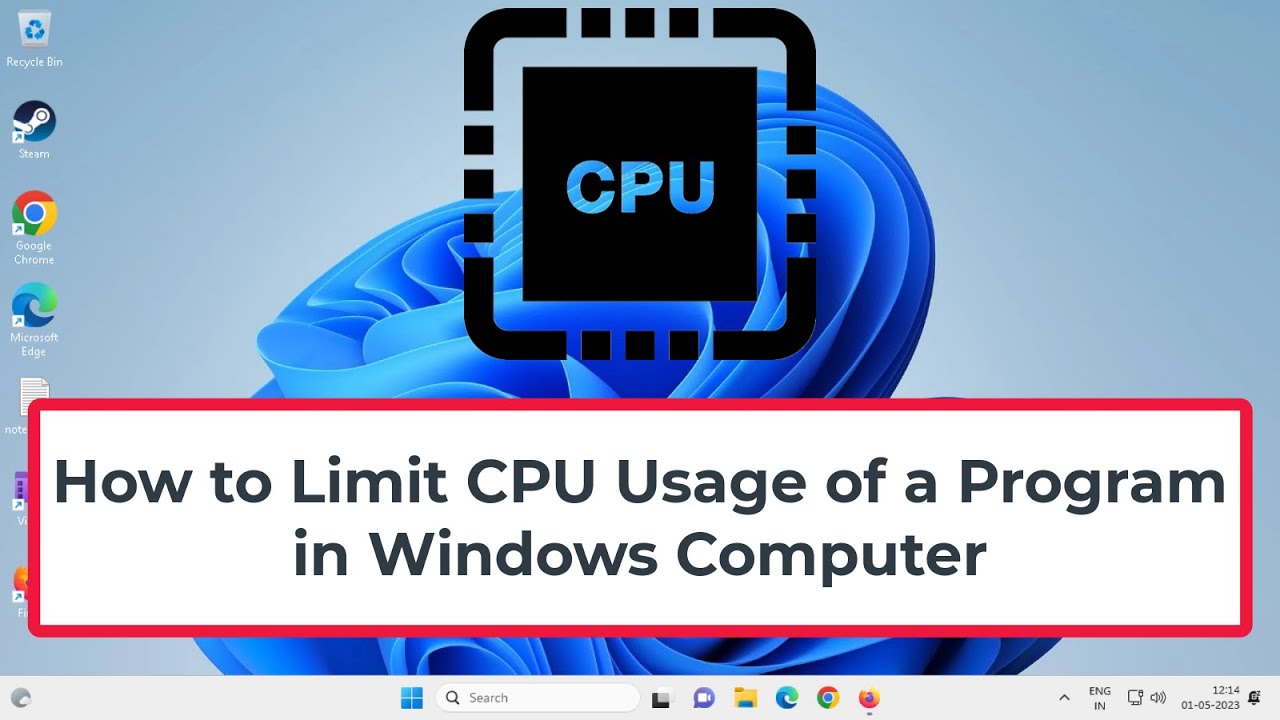This can result in sluggish system performance, reduced efficiency, and even system crashes.
CPU usagerefers to the amount of processing power a program consumes.
It is measured as a percentage and indicates how much of the CPUs capabilities are being utilized.

The importance of limiting CPU usage becomes evident when seeking to run resource-intensive programs alongside other applications or processes.
Moreover, reducing CPU usage can also be beneficial for older systems or those with lower processing power.
There are various methods available to limit CPU usage for specific programs.
Some involve adjusting priority levels, setting CPU affinity, or using built-in system tools like the Task Manager.
Alternatively, there are also third-party software options specifically designed to manage and restrict CPU usage.
CPU usage refers to the amount of processing power that a program or process requires to run properly.
The CPU, or Central Processing Unit, is often referred to as the brain of the computer.
It carries out instructions and performs calculations for all the programs running on the system.
Each program you open or process you initiate demands a specific amount of CPU usage to complete its tasks.
CPU usage can vary depending on the nature of the program or process.
On the other hand, simple tasks like browsing the internet or checking emails typically require minimal CPU usage.
Sometimes, certain tasks or programs naturally require higher CPU usage, and this is normal.
Why Limit CPU Usage?
Limiting CPU usage for certain programs can bring several benefits to your systems overall performance and efficiency.
Here are a few reasons why you might want to consider implementing CPU usage limitations:
1.
This allows you to carry out different tasks without one program impacting the performance of others.
By limiting CPU usage, you could help prevent overheating and protect your hardware from potential damage.
Priority levels determine the importance of a programs execution, allocating resources accordingly.
Setting a priority level too low might cause the program to run slower or potentially impact its functionality.
Therefore, its recommended to carefully consider the impact on the programs performance before allocating a lower priority level.
This method is effective for temporarily limiting the CPU usage of a specific program.
However, keep in mind that priority levels are reset once you exit the program.
If you want to permanently limit CPU usage, continue reading the next section for an alternative method.
It allows you to control processes and applications running on your setup, effectively managing their resource utilization.
It allows you to customize configs on the go, making it convenient to manage resource allocation when needed.
However, similar to the previous methods, Task Managers CPU affinity and priority prefs are not permanent.
You will need to adjust them each time you launch the program.
There are several applications available that specialize in managing and controlling CPU usage, providing additional features and flexibility.
Remember to exercise caution when manipulating CPU usage configs to ensure the stability and functionality of your system.
Remember, its essential to approach CPU usage limitations with caution.
Adjusting priorities or CPU affinity too aggressively may result in reduced program performance or functionality.